etruscan final
1/496
There's no tags or description
Looks like no tags are added yet.
Name | Mastery | Learn | Test | Matching | Spaced |
|---|
No study sessions yet.
497 Terms
etruscan importance
urban and literate civilization
big active period/peak
5th and 6th centurys BC
different names for the etruscan
tyrrhenoi - greek
etrusci - latin
etruscans - rasenna or rasna
the etruscans are most likely from
eastern origin
herodotus on etrusan origin
they are lydians that moved for food (like half the population)
dionysius of halicanassus on etruscan origin
Autochthonous theory like from there
Eastern origin thinkers
Herodotus
Hellancius of lesbos
Anticlides of Athens
Herodotus
Lydians migrated under leader of Tyrrhenus
Hellanicus of Lesbos
Pelasgians who arrived by sailing up Adriatic Sea
Anticles of Athens
Pelasgians who founded lesmos and imbros and later to Italy, joining Lydians led by tyrrneus
There is no Etruscan
Literature
Pyrigi tablets
Theory of the secula
Idk
Etruscan prophecy
Civilization lasts for 10 secula
Iron Age of Etruria
Very beginning - Villanovan culture
Protovillanovan Culture
Etruscan? Way back when
Male tomb villanovan
Rectangular razors, serpentine and dragon fibulae, pins occasionally weapons or helmets
Female tomb Villanova
Hairpins, arch shaped fibulae, spindle whorls, loom weights, sometime belt
Late villanovan period
Increase in commercial activity and initial development in social stratification p
VII century Etruria
Orientalizing period (720 -580 BC)
Orietalizing period
720-580, increased trade network, rise of powerful aristocracy, princely burials, Etruscan urban centers
First funerary Mounds are shown in
Orientalizing period
Several palaces are from
Orientalizing period
Tarquinia
Large underground Etruscan burial chambers, carved out of natural rock, were the norm at which location?
Tarquinia
major Etruscan city-state
Age of Expansion Etruria VI
580-470 BCE
Peperino
hard limestone
Villanovan Burials
Urn underneath some soil
Other villanovan urn stuff
Helmets huts geometric decor
Metalworking villanovan
Fibulae (woman leach type sanguisuga)
Bucchero
Black vase thing super dark
Bucchero sottile
Original little bucchero thin and fine
Bucchero transitional
Has like a stamp thing on it usually little shapes
Bucchero pesante/ Eavy Bucchero
Thick thick stuff
Sub geometric ceramic
First half of 7th c BCE
Sub geometric things
Painter of Narce, tomb of ducks, tomb of roaring lion

Tomb of the ducks, Veii c.680 - 660 BCE
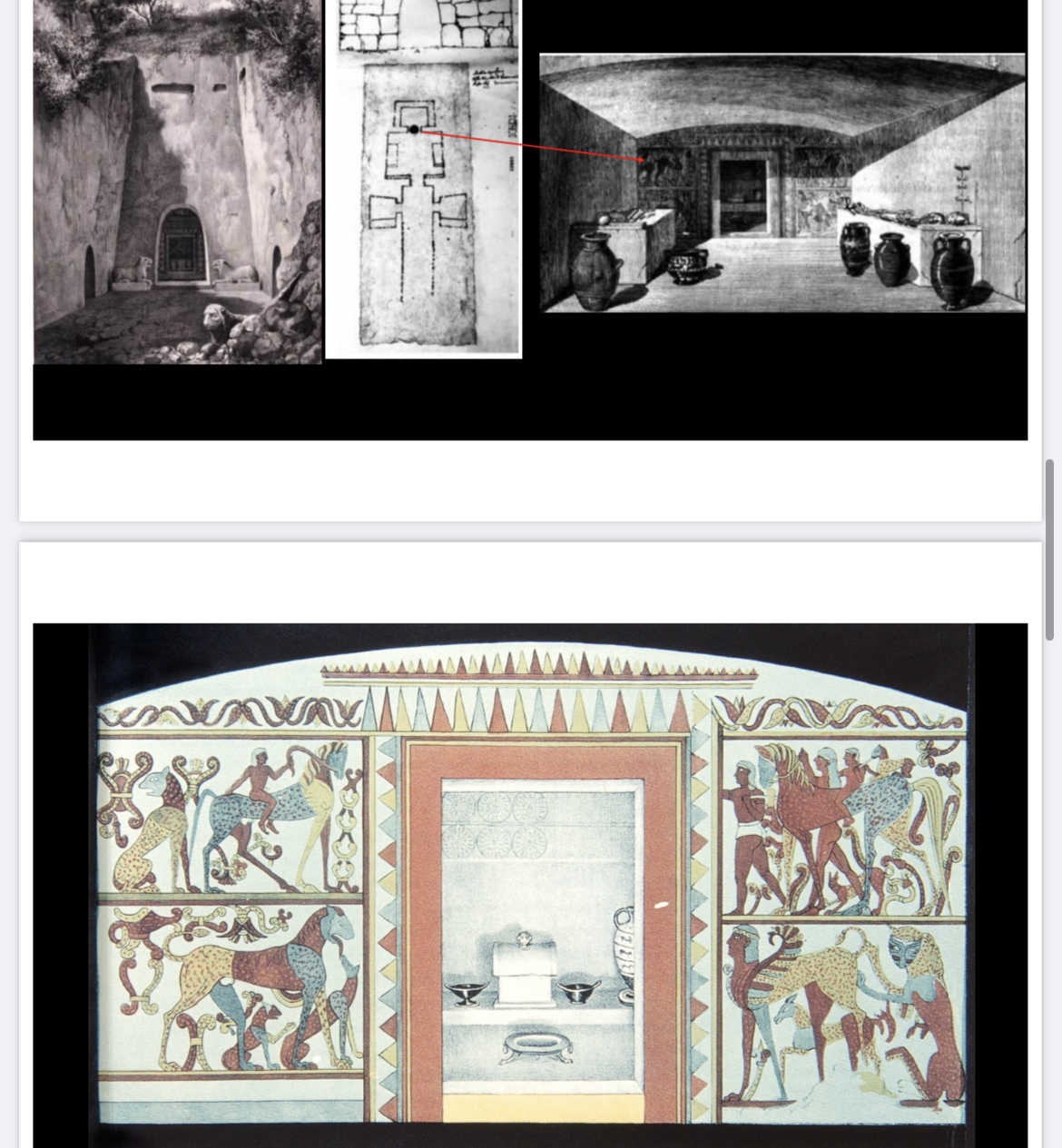
Campana tomb Veii 600 BCE
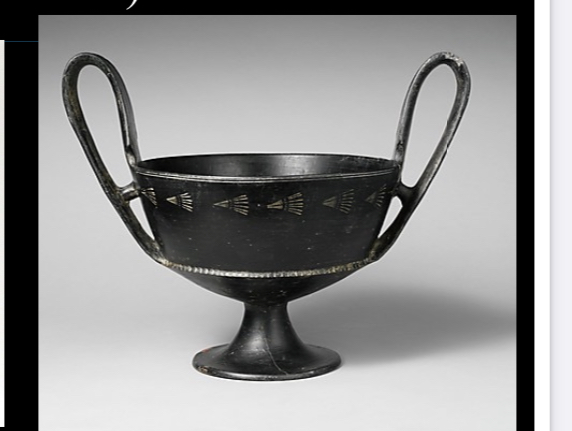
Bucchero sottile kanthos - 650-600 BCE - I think there is something special about the shape
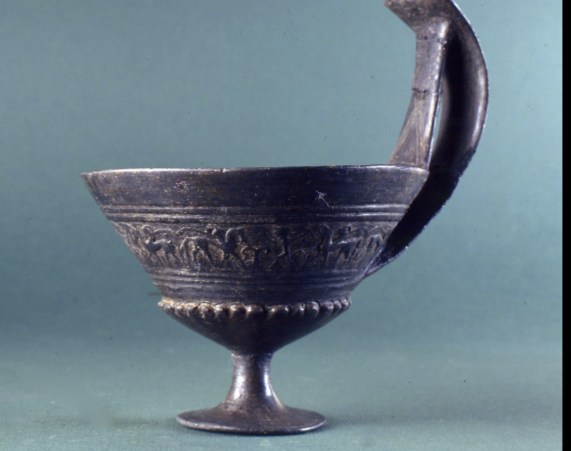
Bucchero kyathos (drinking cup) - Chiusi - 600-570 - notice the stamp around the cup
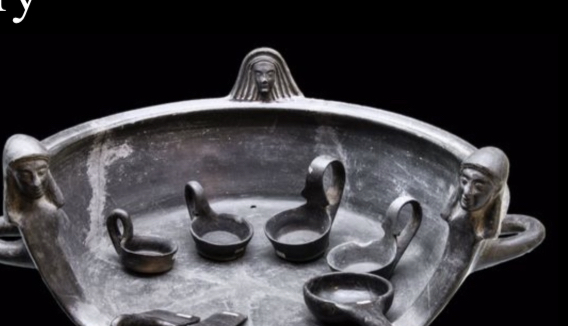
Bucchero pesante - 550-500 BCE - Foculum (serving tray thing)
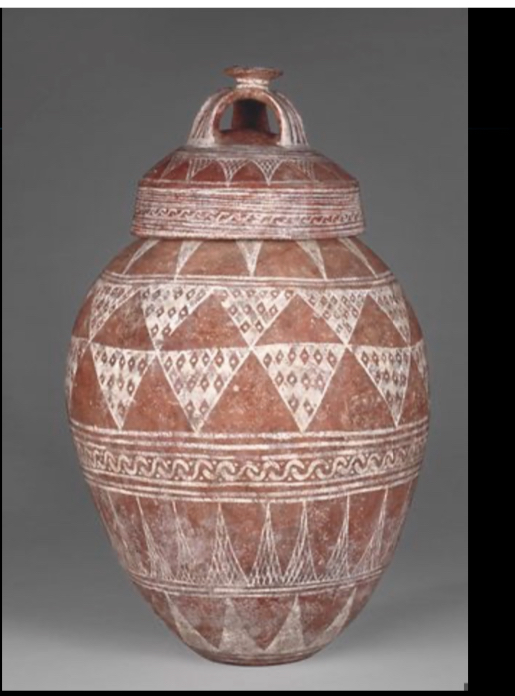
White on red/ red on white
Orientalising period
Caertan production
Orientalizing period - not sure what makes it unique come back to
Architectural terracotta
Actually insane but need to give more a. Explanation
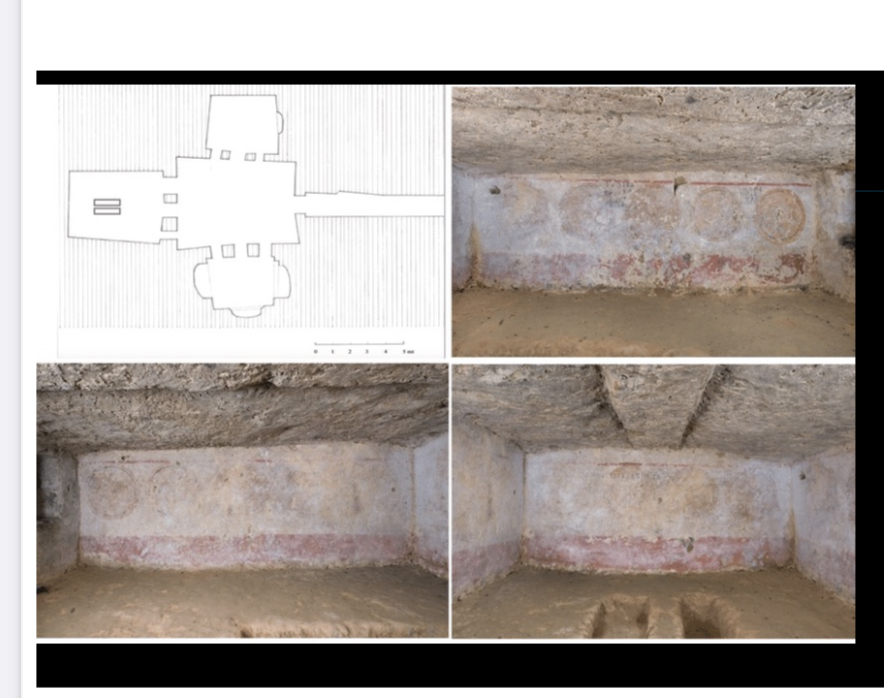
Tomb of the shields - Tarquinia - 350-300 BCE
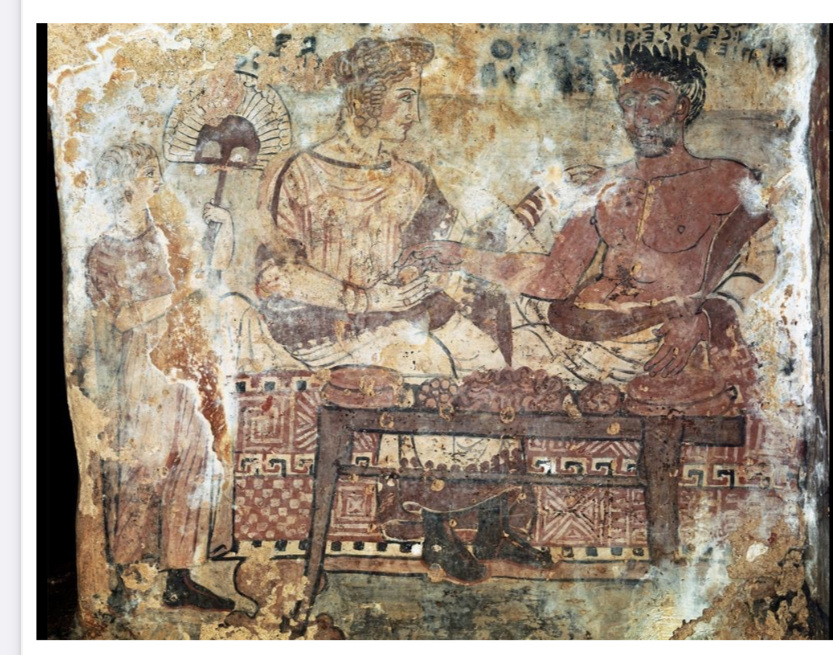
Tomb of the shields - Tarquinia- 350 300 BC Larth Velcha with wife Velia
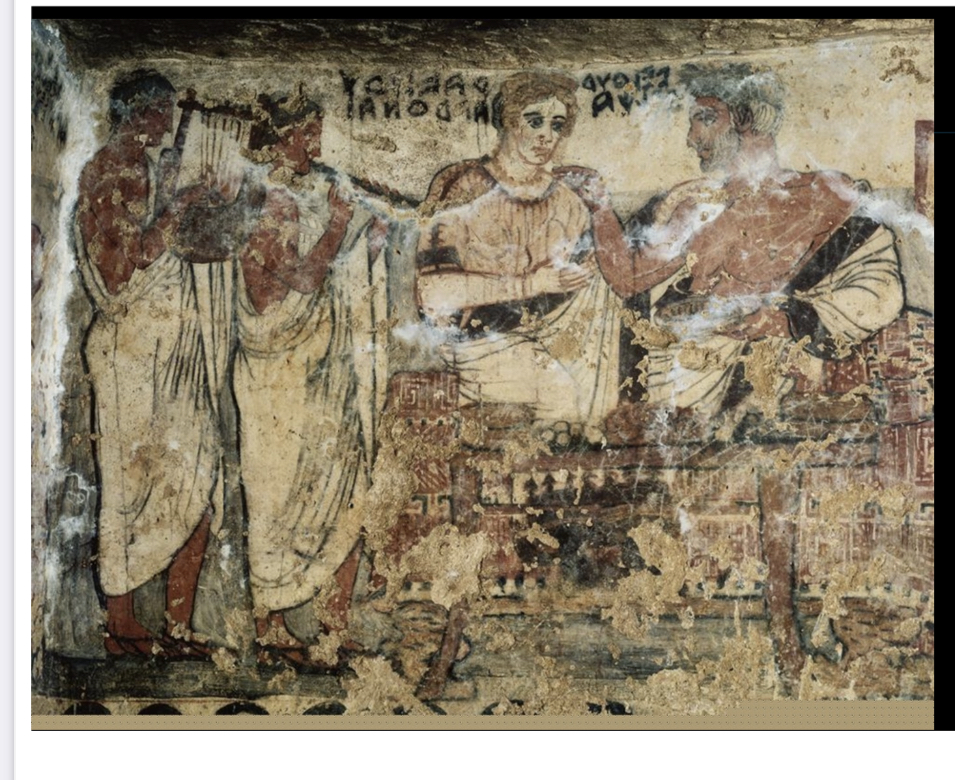
Larth Velcha mother and father - tomb of the shields - Tarquinia- 350 - 300 BC
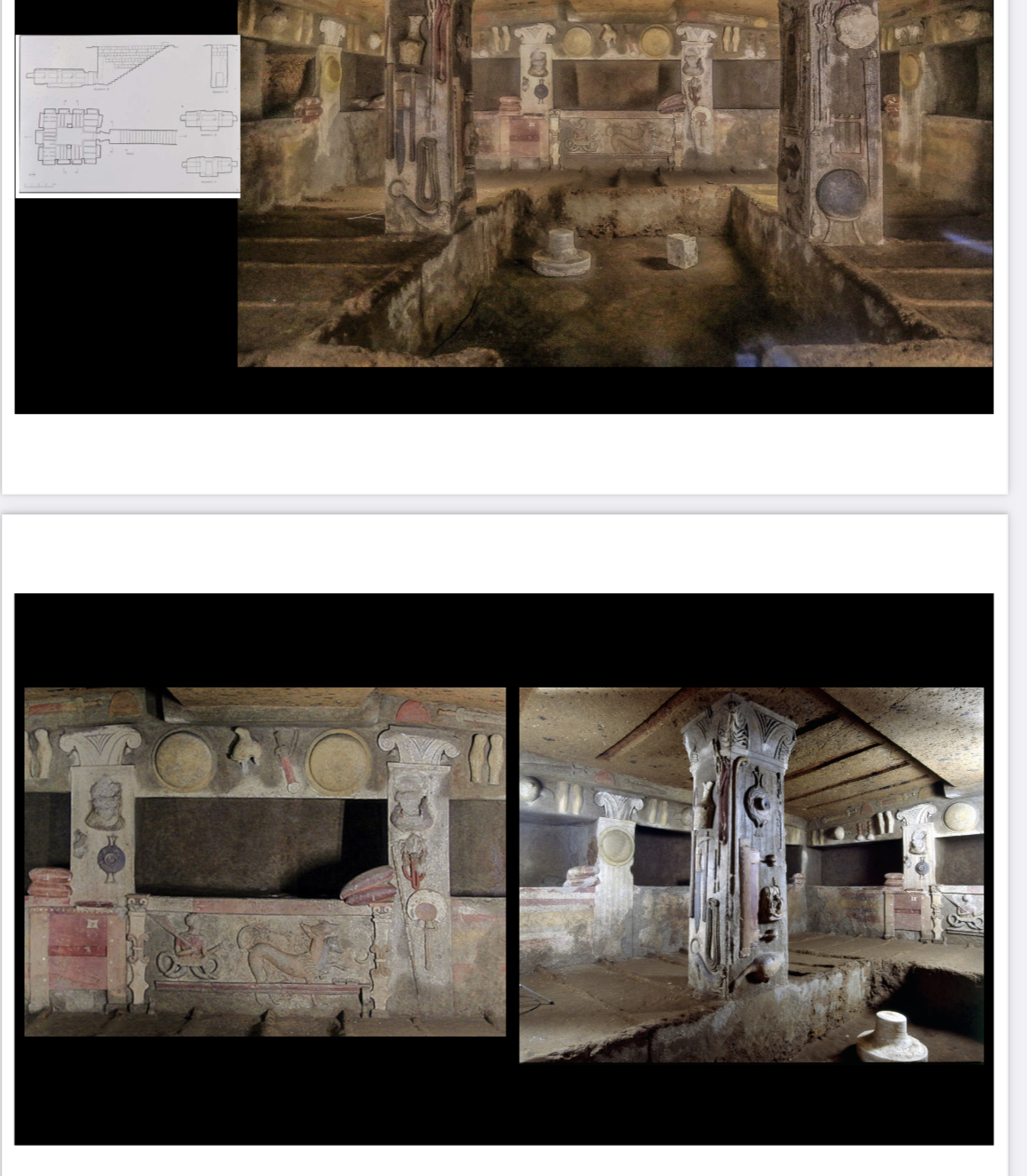
Tomb of reliefs - Cerveteri - banditaccia necropolis - end of 4th C BCE
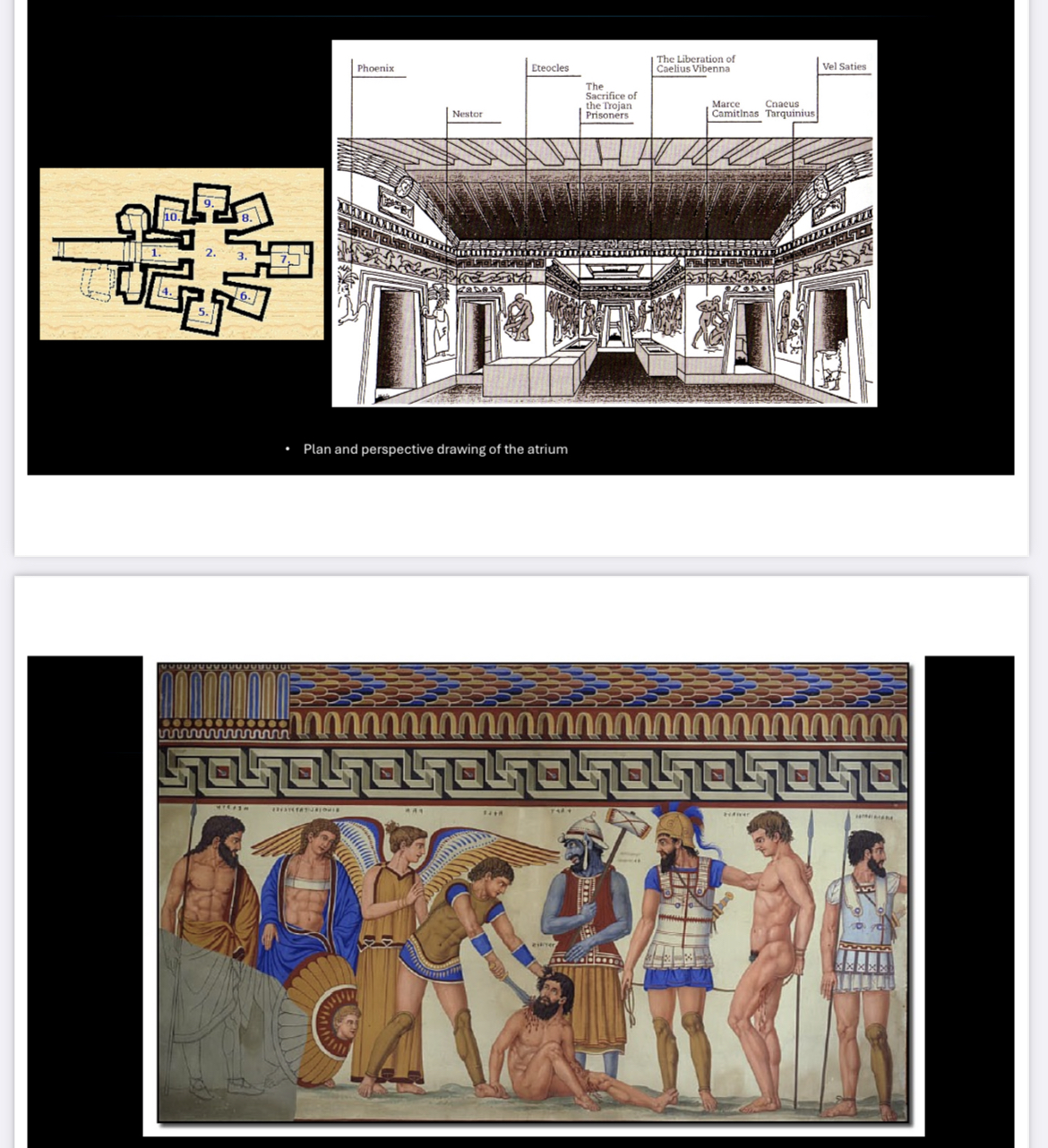
Francois tomb - vulci - c. 325 BC
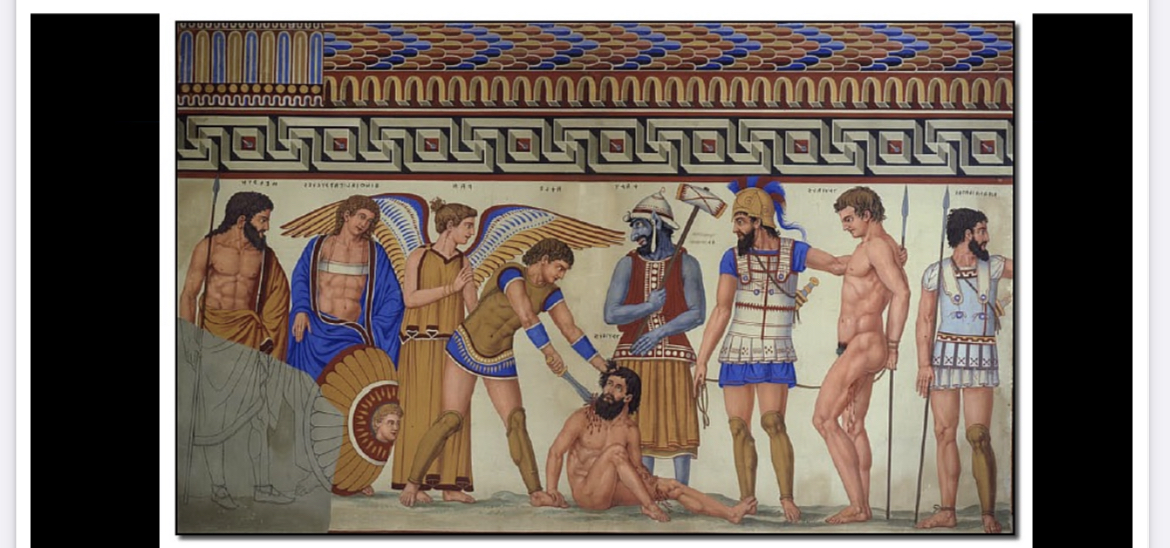

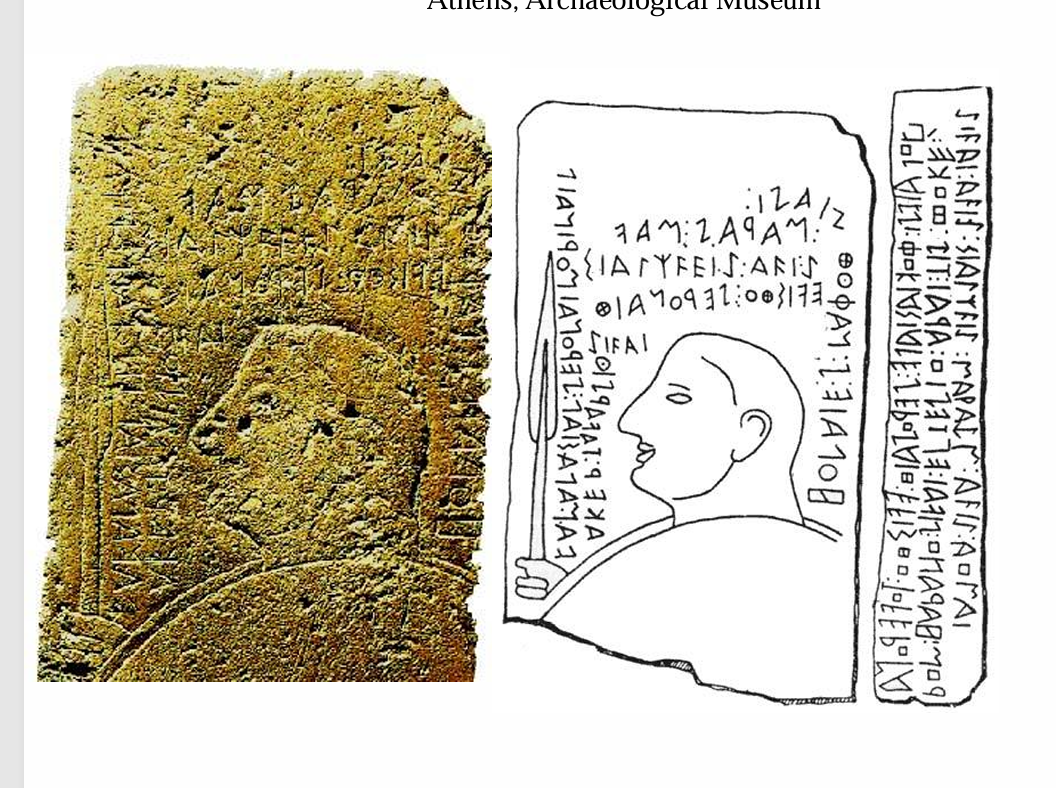
stele of lemnos
funerary inscription from the ancient Etruscan site of Lemnos, Greece, dated to the 6th century BCE. It provides valuable insights into Etruscan language and customs.
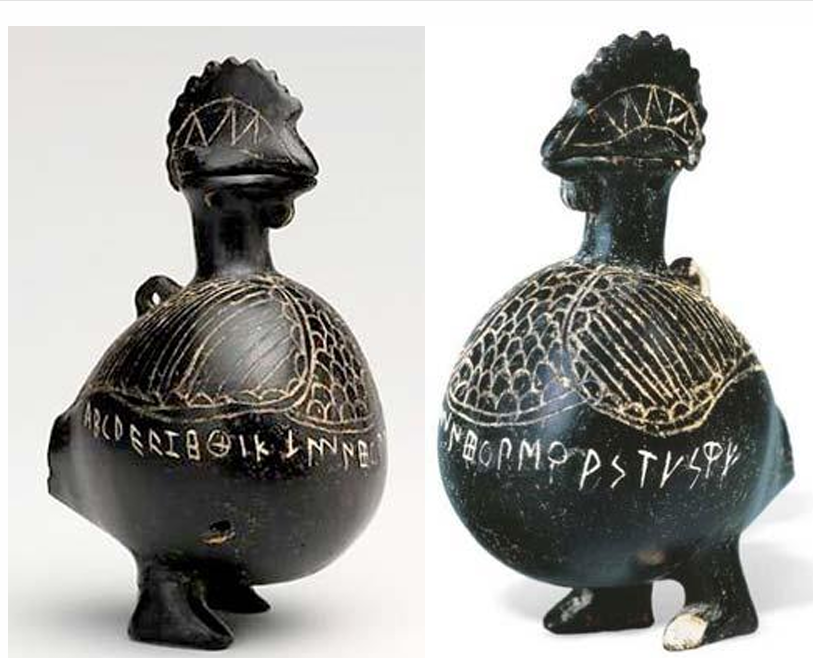
Bucchero vessel in the shape of a cockerel (Abecedarium). The Metropolitan Museum of Art, Fletcher Fund, 1924
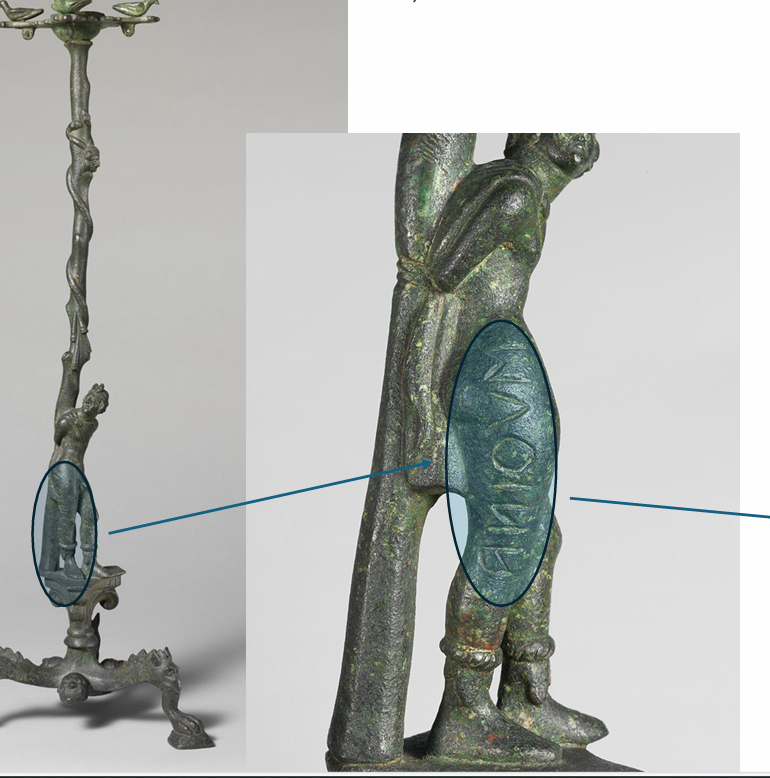
Bronze thymiaterion (incense burner) with Marsyas late 4th century BCE MET, New York - SUNTHIA INSCRIPTION
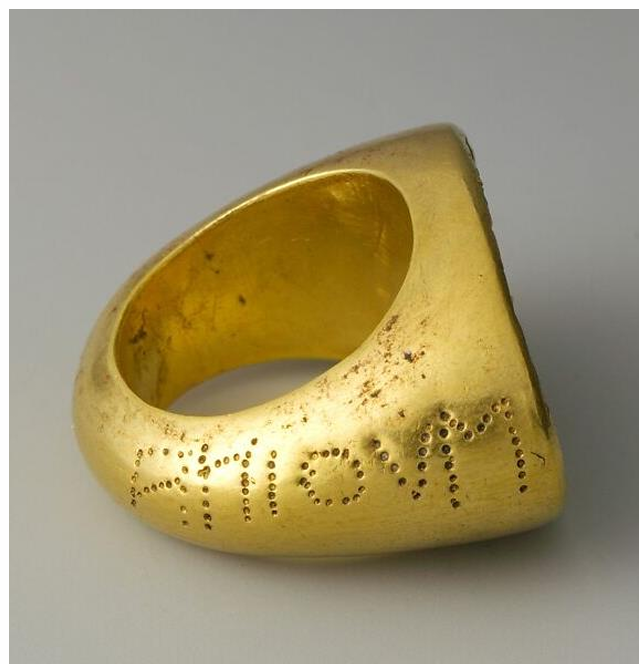
Gold ring late 4th or early 3rd century BCE MET, New York - SUNTHIA INSCRIPTION
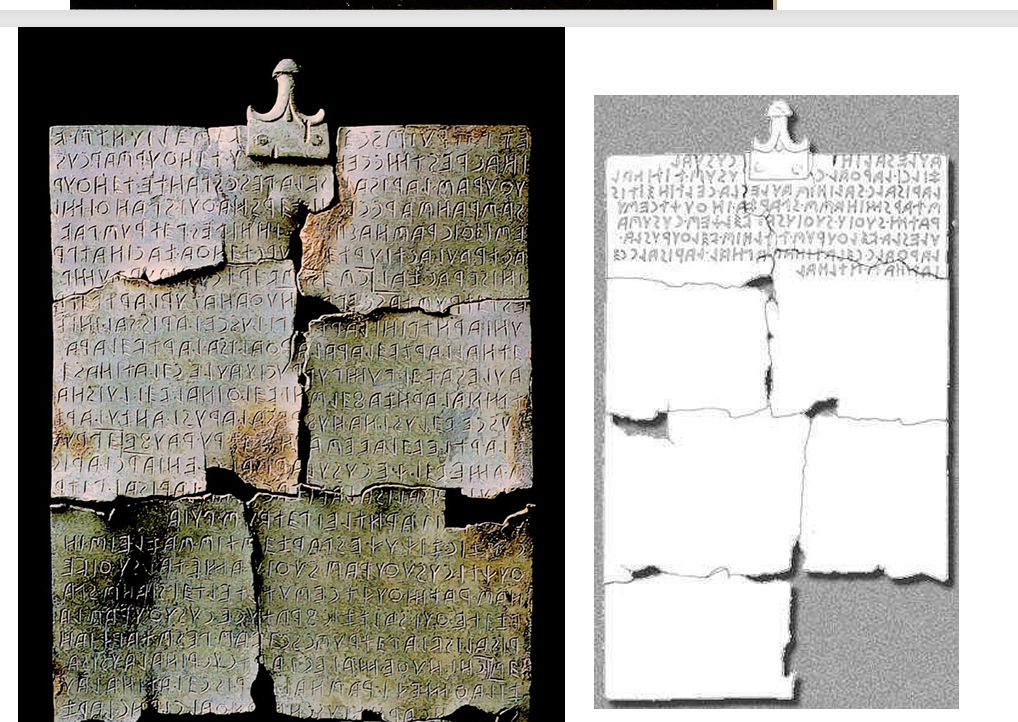
Probably record of a land sale conducted through a public claim made by the buyer ( a certain Petru Scevas) in the presence of the seller (a member of the family Cusu) and the praeto - Tabula Capuana Altes Museum, Berlin Mid 5th century BC
THE VI CENTURY: THE AGE OF EXPANSION
Emporia: professional merchant and development of a more advanced commercial exchange system • Contacts with Corinth and Eastern Greece • Etruscan Thalassocracy • Etruscan Rome • Etruscan Colonization of the Po Valley
The 6th Century BC: an Era of Kings and Tyrants in Etruria and Rome
•Three Etruscan Kings of Rome (Tarquinius Priscus; Servius Tullius;Tarquinius the Superb) •Thefarie Velianas (Cerveteri) •Porsenna (Chiusi-Rome)
ETRUSCAN COLONIZATION OF THE PO VALLEY BETWEEN THE 6TH AND 5TH CENTURIES BC
expansion of already existing settlements (e.g., Felsina, Adria) • foundation of new ones at the center of land and coastal trade routes (e.g., Marzabotto, Spina).
THE NECROPOLIS AS A REFLECTION OF THE CITY: second half of the 6th cent. BC
The layout of necropolises in the second half of the 6th century BC—such as the Banditaccia necropolis in Cerveteri and the Crocifisso del Tufo necropolis in Orvieto—features individual tombs, each inscribed on the architrave with the owner's name. This structured arrangement evokes the presence of a broader, more egalitarian aristocratic urban class.

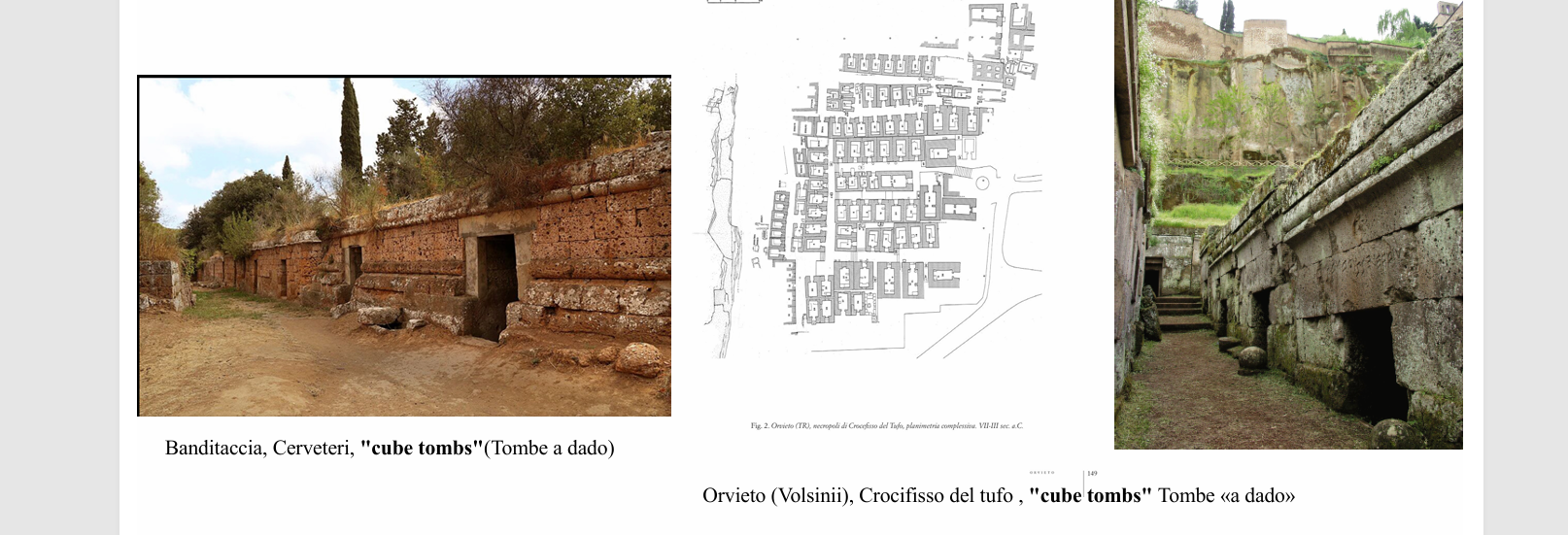
V CENTURY BC: THE AGE OF THE CRISIS
Syracuse expands its influence over the Mediterranean: The Mediterranean Sea before the battle of Himera ( 480 BC) and the batte of Cuma (474 BC) • 480 BC: Battle of Himera • 474 BC: Battle of Cuma
CONTACTS WITH THE GREEKS
•Adoption of the alphabet •Greek-made objects found in Etruscan burials, transported by Greek traders •Introduction of new ceramic production technologies
ITALO-GEOMETRIC WARE
NEW TECHNOLOGIES NEW GREEK SHAPES NEW DECORATION (new techique (painted vases) and new designs)
THE ORIENTALISING PERIOD c.720-580 BC
Consolidation of an Aristocratic Class Controlling Resources The Etruscans became highly skilled traders across the Mediterranean. Flourishing Economy (metals, agriculture—e.g., wine production). The arrival of artists, finished products, and new cultural stimuli. Development of Urbanization.
Imported Luxury Items



TUMULO DELLA PIETRERA-VETULONIA- 650-625 BC.
DAIDALIC INFLUENCES

Etruria showed social development and sophistication in
Late Bronze
Age (c.1300 to 900 BC).
BC). In the transition from the very end of the Bronze
Age into the Iron Age
(950–750 BC) the settlement patterns are radically
transformed and it is clear that Etruria has undergone a revolution.
the impact of the Romans was
beginning to be felt;
by 400 BC
most famous etruscan inscription
The most famous however is the funerary monument found at Pisaurum. In
beautifully inscribed Latin and Etruscan letters, the inscription reads:
[L ·CA]FATIUS· L ·F ·STE· HARUSPE[X]
FULGURIATOR
(Translation: Lucius Cafatius, son of Lucius, of the voting
tribe Stellatina, haruspex, interpreter of lightning strikes)
[c]afates· lr· lr ·netσ’vis· trutnvt ·frontac
(Translation: Laris Cafates, (son of) Laris, haruspex, interpreter of lightning strikes)
there is no such thing as the
villanovans
veii as a good example of
villanovan revolution
we only ever see
a fraction of society and mostly elite
Most burials in the 12th to
the 9th century BC were
cremations
earliest tombs were in veii
Grotta Gramiccia, Casale del Fosso,
and Quattro Fontanili
in veii tombs what began to become more popular than cremation
inhumation

This hut urn, from Cerveteri in the 6th century, shows both the
enduring nature of this form of cinerary container, but also the
evolution of domestic architecture; this is similar to the more regular
stone built architecture of the 6th century
most substantial remnants of huts are in
tarquinia
The Villanovan revolution
revolution was a transformation of the use of resource;
From 650 or so
until about 550 BC, the majority of the pottery
came from corinth
Over time, we can see Etruscan cities creating temples
that look somewhat
like Greek temples (they have columns and the cult statue is inside and
under a roof, although they are in other ways distinctive), statues which
imitate Greek examples, naming and picturing deities who are either
completely taken over from the Greek world (Aplu/Apollo) or have begun
to look Greek (Uni is a bit like Hera but she is also like other deities). So it
was not difficult for scholars to assume that the Greek influence was
inescapable in all areas.

7. 36.3 cm high, this crater from a tomb in Cerveteri shows on one side a naval battle
perhaps between Greeks and Etruscan pirates, and on the other the Homeric scene of the
blinding of Polyphemus. Dated to around 650 BC, it is inscribed in Greek with the words
‘Aristonothos made me’. So this would appear to be produced by a Greek immigrant to
Cerveteri, who had maintained some of his local knowledge, but had also adapted to more
local traditions
The major Etruscan cities which emerged from the Villanovan revolution
Cerveteri, Tarquinia, Vulci, Roselle, Vetulonia, and
Populonia were all just inland, and Veii and Volterra were connected to the
sea by the Tiber and the Cecina rivers respectively. Both Cerveteri and
Tarquinia had port sites within their territory—Pyrgi and Gravisca.

8. A two-chamber tomb from around 510 BC, Tarquinia. The first chamber has paintings
of the return from the hunt, a grove, and banquet scenes. The second chamber has a
banquet scene in the pediment, and below it a seascape showing birds, fishes, and a diver.
Variously interpreted, the tomb seems to show an idealized version of life either in this
world, or in the next
striking balances in villanovan communities with
Corinthian pottery is less direct in its
evocation of the Greek myths than later Attic ware,
but the phenomenon we
are tracing is the adoption of an orientalizing lifestyle, one might say, or of
a lifestyle which is characterized by the internalization of ideas,
representations, thoughts that belong to a distant world.
The 7th and 6th centuries see both
huge tombs, and a degree of infill.
The earliest tomb painting shares much with
orientalizing art.
EARLIEST TOMB PAINTING WE ARE AWARE OF
tomb of the roaring lions

9. A large single chambered tomb; three sarcophagi to left and right and a main
sarcophagus in the centre, several decorated with painted processions. Dated to the late
4th and early 3rd centuries BC, the paintings are reminiscent of southern Italian tomb
paintings. The family, the Pinie, are also attested at Vulci. The shield emblems are similar
to emblems found on coinage of the time
most early tombs features
prowling, often fantastic
animals, vegetation, and only occasionally human figures appear.
Stylistic features also
reflected Ionian art;
the banquet, komos or revel, and grove are all features
of the world of Dionysus. Satyrs and wineskins, sport and music all
emphasize the world of play and contest which is also reflected—in Greece
—in theatre and ritual. It has been suggested that this is the direct result of
Ionian artists in Etruria, a phenomenon also seen in pottery production and
in paintings on terracotta plaques in Cerveteri.
The Tomb of
the Bulls at Tarquinia depicts
Achilles waiting to ambush Troilos, whilst
elsewhere a bull seems about to charge two men who are intimately
engaged, and a cow looks out at us whilst a man and woman have sex
behind her.
The Sarcophago degli Sposi from Cerveteri
major achievement in terracotta sculpture,
and perhaps one of the most recognizable Etruscan images (there is another,
perhaps by the same artist, in the Louvre), it was made in two halves
because of its size. The sarcophagus represents a couple who recline
together, each holding various objects now lost.